Book review: Tonpfeifen in Bayern, a dissertation with German Gründlichkeit
Author:
Don Duco
Original Title:
Tonpfeifen in Bayern, een dissertatie met Duitse Gründlichkeit
Publication Year:
2010
Publisher:
Stichting Pijpenkabinet
Description:
Introduction in a dissertation on the German clay pipe including industry and trade in the seventeenth and first half of the eighteenth century.
Natascha Mehler's dissertation entitled Tonpfeifen in Bayern (ca. 1600-1745) (Bonn, 2010) describes a century and a half of pipe history. Anyone who begins to read the voluminous book of no less than 425 pages will quickly become fascinated: it is a dissertation that runs like a train and takes you step by step through 150 years of pipe history. The title already makes it clear that it concerns a demarcated period and area and the connoisseur knows that it is a virtually unwritten chapter in the history of the tobacco pipe. The work is based on thousands of pipe finds from Bavaria and neighboring Austria and focuses on the Fersepfeife, the heeled stemmed clay pipe. After a brief introduction in which the theme is framed and the find material is presented, Mehler poses her questions that form the core of her research.
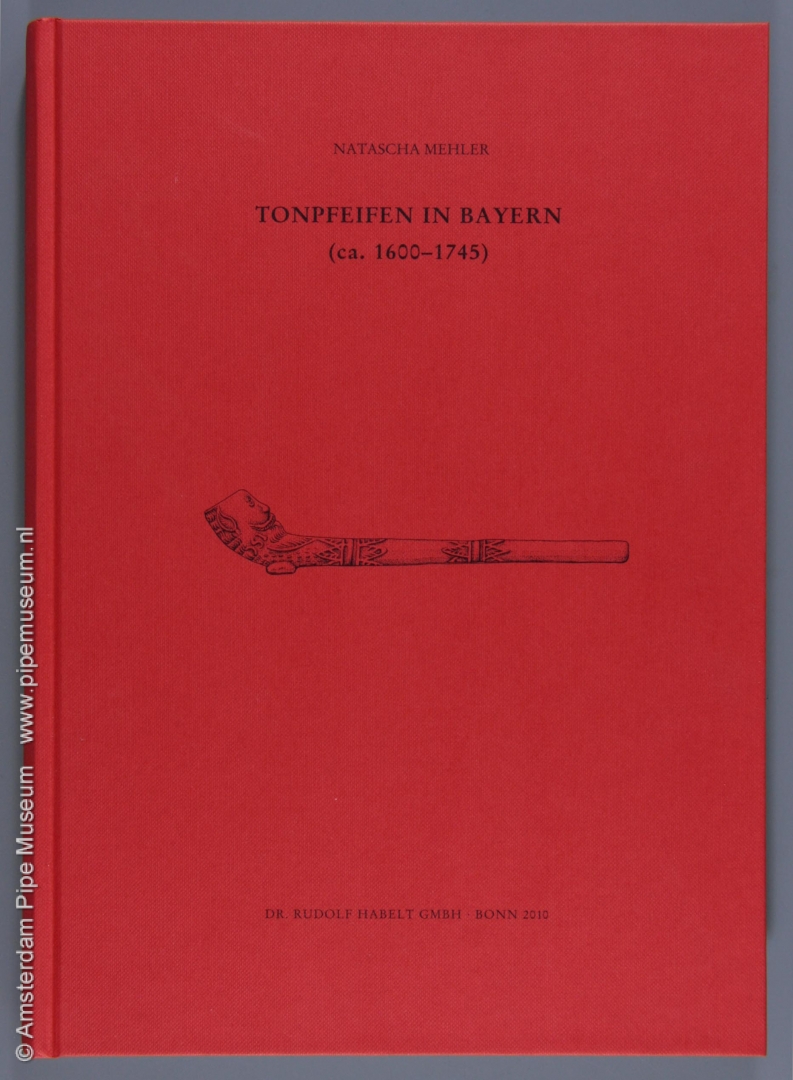
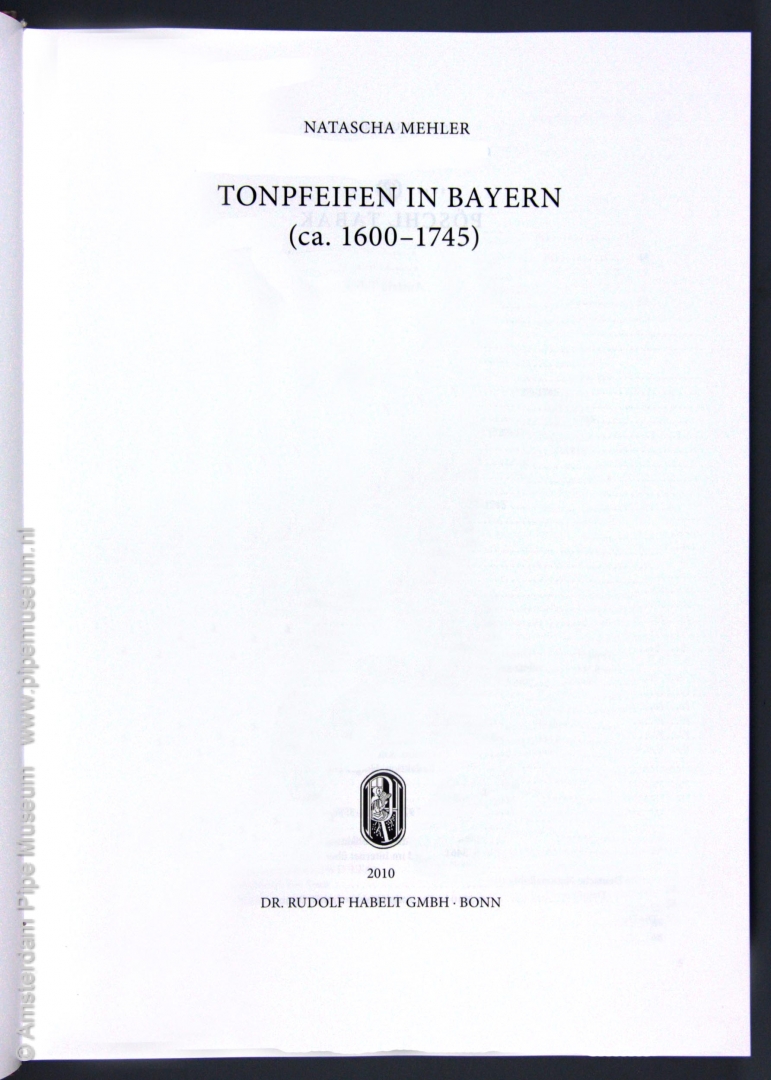
In what is called the social-historical background (chapter 2), a story unfolds about tobacco use in Electoral Bavaria. In the first period, smoking and the distribution of the pipe remain somewhat shadowy, although it is clear that attempts to ban smoking have failed. That leads to a drastic change because the Prince-Elector takes smoking to his advantage. From 1669, the levying of tobacco tax starts to generate income for the monarch. The importance of this monopoly soon increased, since not only tobacco, also the trade in pipes was included, a totally new phenomenon in the world. From 1675, in Bavaria, the lease of the right to sell pipes and tobacco is known as Appalti. The tenant ensures the tax payment to the monarch and thus acquires a monopoly. In a number of stages, the structure of this form of taxation, unknown to us, changes. In any case, since the tenant has to prevent the smuggling of untaxed pipes to Bavaria, it became customary that each tenant he ordered pipes bearing his mark. The system of the Appalto lasts until the year 1745, the abolition of this tax and for that reason that year was also chosen as the closing date of this dissertation.
Two thematic chapters precede the actual archaeological research. The first (chapter 3) introduces, in addition to the standard smoking utensils, the ancillary functions of the pipe, such as the tobacco smoke enema, the pipe as a melting pot, a pipe clay hair curler and the shooting pipes. Later it appears that this chapter has hardly any relationship with the research. I consider such information that broadens the theme but does not deepen it, as a somewhat rhythm-disrupting ballast. A topic in itself and more relevant is the explanation of the technique (chapter 4). In Germany this is not limited to the so-called casting but includes other production methods as well. The hand-formed pipe, a complementary phenomenon characteristic of Bavaria, is the most interesting variant for us. From a technical point of view, a production method beyond the scope of the Dutch pipe making, is the making on the potter’s wheel. Finally, pipe glazing is discussed, more commonly applied in Bavaria than in our regions.
You can read through chapters 4 to 9 in a daze. In a clear argument the pipes, 4000 in number, are discussed systematically. On the basis of a distinction in "Waren" or wares, a ceramic subdivision from soft-fired to almost stoneware, the find material is classified schematically (chapter 5.1). Such a classification would not be useful for the Dutch industry, because the Dutch product is more uniform. It indicates that the locally oriented pipe industry in Bavaria was devoid of standardized production with a fixed baking technique. In Bavaria, as a result, we see a greater difference in raw materials and baking methods, resulting in a wider variety of shard types. For the archaeologist of today, this offers more distinction and thus additional possibilities for attribution. Comparison of the material from various sites also indicates that Bavaria had a strongly regionally oriented industry.
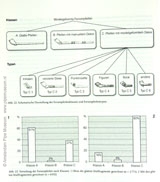
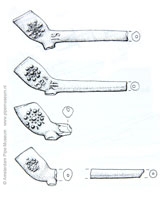

For the first time in pipe history, a clay analysis is used, in which RFA or X-ray fluorescence analyzes create the possibility to classify the material according to a given clay pit (chapter 5.3). This newly initiated research - in general a blind spot in pipe research - yields substantial results to arrive at the classification of the pipe. For example, the raw material for Bavarian pipes appears to come from three clay quarries. Unfortunately, these results ultimately provide little additional information because Mehler also applied all other conceivable disciplines of research, so that no aspect escapes her. Incidentally, this fluorescence analysis does encourage consideration of the possibilities for Dutch pipe research.
The elaboration of the typology, the second approach to identify the Bavarian pipe, starts with the theoretical question what to do with the typology (chapter 6). Because Mehler finds no similarity with the Dutch or English pipe shape development, she constructs a completely new classification that seems somewhat strange to the Dutch researcher. The three-way division is not based on a shape differentiation, but on the production-technical distinction. The undecorated pipe is the first group. The word Glatte is somewhat confusing for us as an indication for the unadorned pipe, which refers to our category of coarse. In the Gouda vocabulary, the word Glatte is rather used for the stroke bunished pipe. The second category includes pipes with hand-applied decoration, in Dutch terms these are fine or porcelain pipes. Group three is the relief pipe. Mehler works here strongly from her own principles. When we take a look at the groups, the division is not logical, however much we would like to give it to her. Undecorated and relief decorated, the two primitive and inseparably linked modes of production, are now crossed by the fine quality coming from the more developed companies. In Bavarian, the latter category is a rare commodity, usually involving imports.
This is also the chapter that presents the decorations section by section, a discussion that amazes us. The arsenal of decorations is based on the Dutch merit with Gouda, Gorinchem and Amsterdam as the main inspiration centers. However, the local variation that arises from this is so unique and the appearance of these decorations is so general, that we can no longer see them as copies but merely as Bavarian, albeit on a Dutch rationale.
The section on marks (chapters 7 and 8) is divided into two groups. The first deals with the strongly regional relief marks with their roots in the aforementioned tax system of Appalto. So it is not about pipe makers' marks, but tax marks from the tenants who had the pipes made. The actual pipe maker remains out of the picture as an individual and unfortunately the historical sources do not reveal anything about this either. Thanks to these tenant brands, Mehler succeeds in creating a fantastically fitting chronology of the Bavarian brands. Not surprising, thanks to the meticulous registration of these people, but unique as a historical fact. Amazingly, some earlier-looking pipe shapes definitely need to be dated later because the tax brands don't lie. This indicates that the fashion of the pipe is changing less quickly than we are inclined to think. The counterpart of the relief mark, the stamped heel mark, is the exception rather than the rule in Bavaria. Partly this refers back to the monopoly holders, partly it concerns imports, either from directly outside the Electorate or even from Gouda or elsewhere in Holland.
The results of these deductive findings, together with their well-thought-out conclusions, almost reach an apotheosis in the treatment of the chronology (chapter 9). Mehler turns away from the ease of taking the Dutch chronology as a starting point, even here she does her own investigations. Again, this chapter starts with the theory to be sought: methodologically she put the question how and from what angles she can work, and again she shows herself a scientist with a critical approach and a sharp mind. She reviews the options for chronologizing and shows which benchmarks this yields and to which relative chronology this can lead. From the collateral archaeological finds and closed complexes she arrives at an absolute dating, which she then specifies according to the physical appearance of the pipe, i.e. per decoration category.
After this carefully accumulated knowledge over eight chapters, the find complexes are reviewed in which she presents the material per location (chapter 10), followed by an enumeration of the production sites in Bavaria (chapter 11). Finally, the author offers a very fascinating treatise (chapter 12) on the trade in clay pipes and especially the role that smuggling played in it. The book is concluded with appendices from the archival sources on tobacco use, the Appalti and finds lists of the researched material (chapter 13-17).
It is clear that Mehler presents herself as an exemplary scientist in this dissertation. By building up her train of thought so carefully and justifying every step, there is hardly anything to criticize methodologically. She is critical enough to deviate from established theories and knows how to tread new research paths with her sharp mind. It is of course a great fortune that such interesting (archive) material comes up. It remains to be seen whether Mehler, with her meticulous research fully masters the archaeological material - in the sense of material expertise.

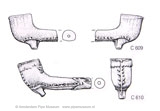
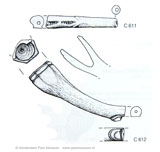
Considering that Germany only started researching the clay pipe twenty years ago, this dissertation shows how quickly this research topic has matured. Between 1986 and 1988 the first exhibitions on clay pipes were organized in Germany, based on experience from the Netherlands. This resulted in the foundation of the Arbeitskreis für Irdene Pfeifen. Mehler stepped in in 2000 when the circle had already existed for the first decade. Her decisive approach and systematic, gründliche working method led to a full description of the history of a federal state based on critical scientific principles. The pipe history of Bavaria is therefore available to everyone, but that is not the function of this publication. It is precisely the methodological approach in this book that is of great importance and provides inspiration for every researcher to make optimal use of the clay pipe as a source of information.
Her predecessor Martin Kügler obtained his PhD in 1995 on the pipe industry in the Westerwald (note 1). In his research, nineteenth and twentieth century industry prevails, studied from the historical sources and the surviving workshops, with a modest addition from archeology. Mehler's archaeological approach, inherent to the earlier period of her research, is complementary to this in all respects, but methodologically much stronger, partly because the archival basis conveys the detailed facts in this publication. It is not surprising that after fifteen years of critical combination and deduction of knowledge, a much greater result has been achieved. This new dissertation thus forms an extremely valuable addition to the available literature.
In addition to praise, it is also useful to look at points of criticism: gaps or shortcomings. In a comprehensive study of a federal state, this is inevitable because some aspects always remain limited. For example, the integration of the technology in assessing the products is a bit thin. The knowledge Mehler has of the pipe mould, for example, does not fit well with the reality of the technology. The lifespan of the clay pipe is completely misjudged, in that respect every researcher of the pipe should first experience what pipe smoking means. For example, a designation like hot smoke is absolutely out of place for pipe smokers. We also see some art-historical fraying: the discussion of the Jonas pipe (and Sir Walter Raleigh) is below par. A final factor is that the use of the pipe as a smoking instrument and as a status indicator is unfortunately omitted. It seems that Mehler sometimes fails to grasp the essence of Dutch literature and therefore goes her own way, not along the well-trodden paths of the current pipe study but, instead, based on the archaeological disciplines. Was it the language barrier that kept her unfamiliar with the value of the clay pipe as a status indicator, one of the spearheads of Dutch pipe research in recent years?
Tonpfeifen in Bayern can also be seen as the first counterpart of my study on the seventeenth century pipe, published in Oxford in 1981, almost thirty years ago (note 2). The clay pipe in the seventeenth century Netherlands was the first synthesis between archaeological and archival sources. Three decades of ongoing research lie between that Leiden graduation thesis and this dissertation. The bridge between archaeological and archival research meant a revolution even then. The distribution of industry, the recognition of regional styles and the anchoring of the dating in archival data were completely new and provided the Dutch type chronology of the clay pipe at the time. My study is certainly not strong analytically. The major difference between the 1981 publication and the 2010 dissertation discussed here is partly due to the tremendous growth of the scientific approach in archeology, together with the German Gründlichkeit (thoroughness). The 1981 edition by the BAR has also given a tremendous impetus worldwide to take pipe studies to the scientific level and has generated an increasing interest in historical archeology. I hope that Mehler's dissertation will have the same stimulating effect to further develop knowledge and insight in the next thirty years.
© Don Duco, Pijpenkabinet Foundation, Amsterdam, 2010.
Noten
- Martin Kügler, Pfeifenbäckerei im Westerwald, Die Geschichte der Pfeifenbäckerei des unteren Westerwaldes von den Anfängen um 1700 bis heute, Köln, 1995.
- D.H. Duco, The Clay Tobacco Pipe in the Seventeenth Century Netherlands, Oxford, 1981 in: Davey, The Archaeology of the Clay Tobacco Pipe, BAR International Series, Vol. V 106", 1981, p 369-468. Reprint in Dutch: D.H. Duco, De kleipijp in de zeventiende eeuwse Nederlanden, Oxford 1981, British Archaeological Reports, 256 p.